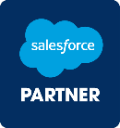- Solutions
-
Products
-
Resources
Sales Automation: What It Is, How It Works, and What to Automate First by Kristi Campbell View all Blog Posts >Get the App, Get the Sidebar, & Get Your Trial Going HereUnleash limitless growth opportunities by partnering with Cirrus Insight.
- Pricing
Filter By:
- All topics
- Sales Intelligence
- Salesforce
- Sales Productivity
- Sales Strategy
- Sales Prospecting
- Book More Meetings
- Sales Activity Data
- Company News
- Sales Leadership
- Sales Metrics
- Team Scheduling
- Prospect Smarter
- AI
- Serious Insights
- Comparison
- Conversation Intelligence
- Sync To Your CRM
- Email Blast
- Email Campaigns
How To Own Your Tech Stack Before It Owns You Part 3: Jobs To Be Done
 The odds are good that, if you’re reading this, you’re familiar with the Jobs to Be Done philosophy. But if not, we think now is a good time to offer a brief refresher. This way, you can better understand how all of the information you gathered helps to make the final evaluations of your tech stacks.
The odds are good that, if you’re reading this, you’re familiar with the Jobs to Be Done philosophy. But if not, we think now is a good time to offer a brief refresher. This way, you can better understand how all of the information you gathered helps to make the final evaluations of your tech stacks.
In short, Jobs to Be Done is a management philosophy. One that takes the point of the view of the customer and aims to identify the needs of that customer. Everything is then evaluated based on how the company’s product offerings best fit that customer’s need. The most frequent example is this one:
If your customer wants to hang a picture of their grandparents on the wall, they’re going to need to make a hole in it. So the customer goes out to buy a hammer. Not because they want to make a hole in the wall. That’s just a function of what they’re trying to accomplish, but because they want to hang the picture up of their grandparents. So from the customer’s perspective, they are hiring the hammer to make the hole in the wall in order to meet their larger want and need of getting this priceless picture displayed. Put another way: There’s the thing you’re selling, and then there’s the reason a customer needs the thing you’re selling in the first place.
So, taking a Jobs to be Done approach means, from the management perspective, considering the sales team as the customer and identifying the correct software that’s going to meet their needs. And likewise too, for the Account Executives; And then every other department within the company. The emphasis for Jobs to Be Done is always on the customer’s need, not the organization’s.
Source
Each market represents a group of people with a job they need done. Needs are the measurable outcome of the job people want done. So if you’re following along with our sales example, the market here is internal. It’s each department in your company. And the needs could be something like up-to-date measurements of # of leads generated, # of calls made, # of emails sent, etc. The goal behind Jobs to Be Done, aside from taking the perspective of the customer to make a decision, is to also figure out a way to have that need met better, or in a less expensive way (often, both).
This is the framework you should use in evaluating your technical needs for each department:
- What are the needs of your (internal) customers?
- What outcomes are you going to measure their success or failure by?
- Which software that you currently have can do these things?
- What software that you currently have can’t do these things?
From there, you begin to cut. Starting with the software that can’t do the job it was hired for.
Once you’ve gone through this process, there’s just one more step you need to take. And that’s to examine the software that’s been identified as useful, and something you want to keep, and evaluate why the departments are currently not utilizing it more.
This is where good, clear communication will come into play. If you have a powerful piece of software that you know can meet the needs of your internal market, but the team isn’t using it, now’s the time to drill deep into the why. A second survey may be needed here, but we suggest taking a workshop approach.
The workshop approach will allow for team members to share where the trouble spots are within the software. This will then allow members of the management team to put together the proper training to get the most out of the software. For example, if you’re using Cirrus Insight to automate data entry from your sales representatives, but you’re not using the team scheduling functionality and are instead paying for another service like Calendly, find out why. Then, speak to your account representative here at Cirrus Insight and see what kind of training or educational material they are currently offering. From there, you’ll set up time to go through the educational material with our team, and then offer further training for yours through the use of Loom Videos or through a live workshop via Zoom. If you find that Cirrus Insight can do the same job as Calendly, but you’re also benefiting from using our software for its other features, you can then cancel Calendly. (Not to pick on them, of course. This is just an example of how you would evaluate your tech stack.)%20(2).jpeg?width=830&height=474&name=Elements-for-Webinar-event-20232%20(1)%20(2).jpeg) So, the key to reducing your tech stack is proper education. The kind of education that can explain the benefits of the software you’re currently using, and how employees can get the most from it. Not only to do the job you hired the software for, but also to identify other jobs it can do to help your teams thrive.
So, the key to reducing your tech stack is proper education. The kind of education that can explain the benefits of the software you’re currently using, and how employees can get the most from it. Not only to do the job you hired the software for, but also to identify other jobs it can do to help your teams thrive.
Properly educating your employees and management team will allow you to eliminate duplicative software and save costs. And of course, there’s an even bigger benefit. Reducing your tech stack and offering multiple opportunities to learn how to best use the software will double your employee productivity. This allows companies to legitimately do more with less in an uncertain economic environment while saving money. We like to call that a win-win.
And speaking of win-win’s …
Almost half of the organizations we surveyed in our Benchmark Study are using a CRM, a sync tool, and a scheduling automation tool. Wouldn’t it be great if you had one platform that offered all three functionalities along with best-in-class customer service? Well, there is. It’s us. Your friends here at Cirrus Insight offer all three AND mass emailing capabilities. If you want to learn more, we encourage you to sign-up for a free product demo here.

.png?width=1268&height=1772&name=Sidebar-C%20(1).png)
